It Is Possible To Have A Meaningful Internship Before College And Completing Core Classes! I Share Early

It is possible to have a meaningful internship before college and completing core classes! I share early career tips in the U of MN Duluth Career Center blog: https://umdcareers.wordpress.com/2016/03/30/its-never-too-early-to-intern/ Side note: NASA interns toured the Historic Mission Control where Moon missions were guided from. I wasn't actually the Flight Director of Apollo Missions. However I did sit console in current Mission Control logging tasks during a space walk.
More Posts from Ourtech and Others
Defrag 2014's Take On Data Security
As reflected by our year of high traffic social media platforms, large scale company hacks, and increased amount of data, security of that data has become a top priority in tech. Defrag had a series of break out sessions that featured security. Hot topics highly discussed this afternoon have included the slippery slope of "who owns your data?" presented by Lorinda Brandon from SmartBear, "what's in your trash" explored by Rory O'Rouke, and online security challenges revealed by Rami Essaid of Distil Networks.
The biggest lie on the internet, according to Brandon, is that "you read the Terms Of Use". Let's be honest, we all quickly check the "read" box, and do not bother to even open the privacy policy. Why? To even understand the ramifications of what you are agreeing to would take hours and still be missing details. Brandon shared her hours long experience picking apart Samsung's privacy policy and found that Samsung "Share(s) information for purposes of business and ecosystem". Our data and how businesses use it for their own profitable benefit can be unclear. As innovators in tech it is necessary to be mindful of other's data and be transparent with users.
Bounce.io utilizes digital waste by finding treasure in trash, taking data on what kinds of emails "bounce back" to a user and why it was kicked out. A cool idea O'Rouke of Bounce.io mentioned was a user comparing emails in their spam about penny stocks to the actual performance of that penny stock in the market. If information about a stock ends up in your spam, does that indicate that the stock is a poor investment.
2014 has been filled with a "storm of security attacks" as pointed out by Essaid with the security hacking of Target, Sears, and Home Depot. Unfortunately, hacking has become a profession where it pays to be bad; easy, cheap, low risk, and a big payoff. One of the biggest factors that companies are missing is the idea of prevention accompanied by a plan for reaction if an attack occurs. An attack is inevitable, as the data illustrates with the thousands of bots in existence, so not having a reaction plan is foolish. An interesting scenario Essaid pointed out your website may not be the one that is initially hacked into, yet another website's user names and passwords can be hacked and then bots use these stolen usernames and passwords to access your website's accounts.
How to get involved...
- Become aware of your data footprint and who shares your data
- Advocate for transparency about how companies use your data
- Check security settings on your social media
- If in the tech industry, ensure your company is prepared for security breach

Robotics, Simulation & Future: NASA Co-Op #3 Week 8&9
Robotics: Many NASA interns and Co-Ops got hooked on STEM disciplines by participating in FIRST (For Inspiration and Recognition of Science and Technology) Robotics. In fact there is a robotics team that meets at NASA Johnson's Space Vehicle Mock Up Facility, the Robonauts. There are four levels for FIRST Robotics; Junior Lego League for ages 6 to 10 (JrFLL), Lego Robotics League for 4th to 8th grade (FLL), FIRST Tech Challenge for 7th to 12th grade (FTC), and FIRST Robotics Competition for 9th to 12th graders (FRC). There are still FIRST Robotics events you can take part in.
Search for FIRST Robotics events pick “Event” and use filters such as dates, program type, county and zip code.Volunteers apply through the Volunteer Information and Matching System and need to pass a background check. Once you are accepted into a position the volunteer coordinator will supply you with the necessary training.
WATCH TEAMS COMPETE LIVE (every Thur - Sat through weekend of April 27th, 2017).
Robot my FRC team made
Robot the team who builds here, Robonauts, made.
This year’s FRC game.

Simulation: A group of us toured the Systems Engineering Simulator (SES) lab a part of NASA Johnson's Robotics Engineering division. Astronauts visit SES to practice docking Orion, capturing the SpaceX Dragon cargo ship, and driving a Mars rover. They simulate realistic physics and scenarios with in house software (Unreal Engine couldn't cut it). The have simulations with the International Space Station, Japanese Cargo Vehicle (HTV), Dragon, Cygnus, Orion and future space exploration vehicles.
Future of NASA: Center Director Ellen Ochoa, Deputy Director Mark Geyer and Associate Director Melanie Saunders hosted an All Hands where they shared with NASA Johnson employees essentially our state of the union. Ochoa described that NASA of priority and interest of the new administration. Per the request of the administration, NASA is conducting a study to weigh the risks of adding a manned crew to Space Launch System and Orion Space Craft's EM1 test. This study is expected to conclude late March.

Spectacular!

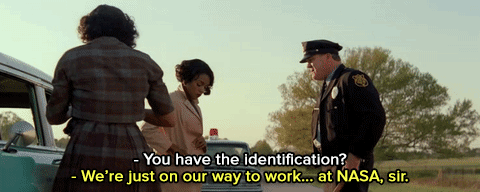

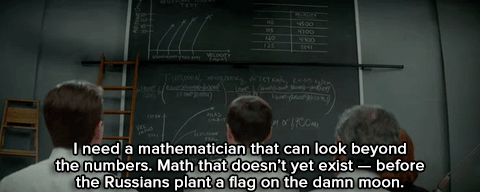
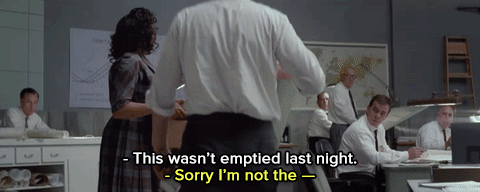
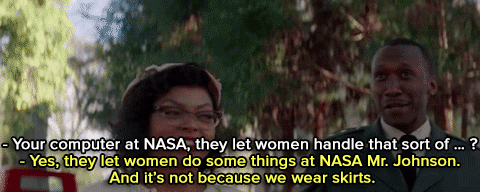



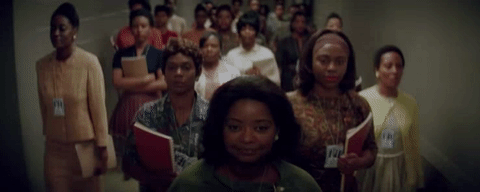
Watch: The trailer for ‘Hidden Figures’ is here — and it looks incredible.
follow @the-movemnt





Pictures of Jupiter Revealed July 4th
Spend 2016’s Fourth of July in a most patriotic way - see new pictures of Jupiter sent back to Earth by NASA’s Juno space craft. Below is a schedule of when you can join the interstellar festivities on NASA TV CT (on either media or public channel): http://www.ustream.tv/nasahdtv
5am - 10am Scientist Interviews 11am - Noon Media Brief 3pm - 4pm Media Brief Replay 7pm - 8pm Media Brief Replay 9:30pm - 11:30pm Jupiter Insertion!




Mars Dust into Thrust: NASA Co-Op #2 Week One
You would think pursuing a double major in electrical engineering and computer science would provide enough breadth to remain confident at a Co-Op... wrong. As I start my second Co-Op tour at NASA Johnson's Propulsion & Energy Conversion team I am finding that the more you learn the less you know. This summer I will be LabVIEW programming for In Situ Resource Utilization (ISRU) a system that turns Mars dust into fuel. ISRU is a rover payload that takes in mars atmosphere and soil and turns it into liquid methane and oxygen (fuel options). Other capabilities is getting O2 to breathe and excavating drinkable water. One of my projects is to control with a National Instruments compact cRIO an oxygen liquefier and a new water concentration sensor. The sensor I am testing uses spectroscopy to eliminate sensor erosion from corrosive Mars materials. These tasks are very chemical engineering heavy which require understanding a system and how to control it safely. I am excited to tackle this learning curve, understand more about Mars mission energy systems, and become more comfortable with chemical engineering concepts. WAYS TO GET INVOLVED Watch what NASA is up to: https://youtu.be/p_snvjghMJg Learn how to program with LabVIEW: https://youtu.be/IOkoyuikj5Q?list=PLdNp0fxltzmPvvK_yjX-XyYgfVW8WK4tu Read about our journey to Mars: http://www.nasa.gov/topics/journeytomars/index.html ISRU in more depth: https://youtu.be/M3HbD1S_H5U






Space Launch System (SLS) booster test screen shots from today. This booster uses 5.5 tons of propellent a second! The booster will help sling shot an unmanned Orion Space Craft around the Moon in late 2018. In mid July I will going to a SLS engine test in person.

Looking Forward to Leadership Conference NCCWSL
Following Memorial Day I will be traveling to DC for NCCWSL, National Conference for College Women Student Leaders, by AAUW (American Association of University Women). AAUW Duluth chapter has given me the awesome opportunity to meet students from around America, represent my engineering discipline and refine my leadership skills.
While Co-Oping at NASA I learned what categories of leadership they look for when hiring branch chiefs, flight directors and even center directors. NASA looks for individuals that can Lead Change, Lead People, are Results Driven, have Business Acumen, can Build Teams and have Discipline Competency. Our center director, Ellen Ochoa, has all of these leadership skills. A leader in a lower position may not have to have business acumen or have weaknesses in two of these categories. With leadership skills identified I have chosen what workshops I should attend...
I Get Knocked Down, but I Get Up Again: Persevering through Life’s Challenges
The Human Side of Collaboration
Be Better: Enhanced Speaking Skills for Women
...including keynote speakers and a trip downtown to learn about advocacy, politics, and policy making from a panel of women who work for senators and representatives on Capitol Hill. I am avoiding sessions that could be replaced by a TEDTalk and sessions presented by business folks that may be there simply to pitch their company - these are all disappointments I have experienced in past conferences.
I am half surprised and half not surprised about how politically charged some of these workshops and lectures are (NCCWSL is hosted in our nation's capitol after all and AAUW uses policy to advance equality). Many leaders in industry do not interface with politics on a daily basis so I hope there is enough relevant content that will truly challenge my understanding of leadership. I want brutal honesty on how I can improve and tools that I can use in industry. I will attend with an open mind.
When I visited the White House in 2013 for a tech related Champions of Change event I advocated for project based learning in schools - reducing standardize testing and implementing measurable projects mirroring challenges in "the real world". During this excursion my primary message will about continuing and growing Earth observation missions. For a final spring semester I wrote about how crucial Earth observation missions are to our environment, safety and economy. I will be sure to post an abridged version here soon. While Earth observation is my primary message I will be sure to also talk about the importance of the "A" in STEAM (Science, Technology, Engineering, Arts, and Math), how trade schools are critical to American jobs and manufacturing and last project based learning again.
I will be live blogging during the conference so subscribe via email to get the latest blog posts and follow me on Twitter @KirsiCootie!

Soon I will be returning to mission control for my fourth Co-Op tour at NASA Johnson Space Center. I will be joining Inventory Stowage Officers (ISO) team in mission control. ISO ensures supplies and experiments are delivered to the International Space Station, completed experiments return to Earth in one piece and space garbage successfully burns up in the atmosphere and does not land in someone's backyard. Last mission control Co-Op I sat console with ISO and watched Kjell Lindgren load the Japanese HTV-5 cargo ship with garbage playfully floating through station with the bags of garbage. I have a feeling ISO will be busy after a long pattern of cargo ship failures and the most recent Russian Progress 65 cargo failure (as SpaceX calls it, rapid unscheduled disassembly) transporting a space toilet, updated space suits and Christmas presents for the astronauts from their families. I expect work I will be doing with ISO will include logistics work on what has priority to be sent up to space station and collaborating with scientists about how their experiment with be stored. Additionally, Super Bowl LI in Houston and the Hidden Figures premiere are NASA related events I am looking forward to.

WAYS TO GET INVOLVED
* Often a live feed of Houston's Mission Control is streamed on NASA TV. My colleagues enjoy trying to catch me picking my nose when sitting console.
* Learn about the programmers behind the Apollo mission in the new movie Hidden Figures.
* Check out everything NASA accomplished in 2016 jam packed in a 3.5 minute video.
* Learn programming with Code.org, Elementary, Middle School, High School and Beyond.
Watch NASA's NewHorizons Pluto Flyby TOMORROW Tuesday July 14th 6:30-7:30amCT on NASA TV
-
 foreverinrecovery liked this · 9 years ago
foreverinrecovery liked this · 9 years ago -
 iloveyoualicegirl liked this · 9 years ago
iloveyoualicegirl liked this · 9 years ago -
 ourtech reblogged this · 9 years ago
ourtech reblogged this · 9 years ago









